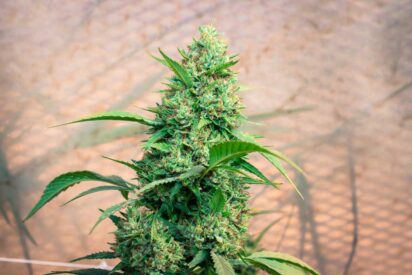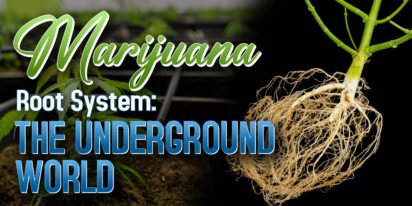
Are You 18 Or Over?
YesOr
No By clicking yes, you certify that you are over 18. By using this website, you agree to our legal disclaimer.605+ Cannabis Strains over 20 Breeders worldwide.
Table of Contents

Planning to grow Cannabis Seeds for your home garden is such an amazing adventure, and it is an exciting endeavor to pursue. Browsing for the Cannabis Seeds that you can try planting might have led you to see autoflowering cannabis strains. What does autoflowering mean, and how can you grow this type of seeds? Keep on reading this autoflower growing guide to finding out more.
In simple terms, autoflowering cannabis can be described as a type of plant that will independently grow without the influence of lighting schedules. They will automatically flower, thus their namesake. Unlike other plants that depend strictly on a specific time for them to be exposed to sunlight or artificial light, autoflowers will start on the flowering stage 2 to 4 weeks after the seeds started their vegetation.
This kind of characteristic began when cannabis breeders began playing around the genetics of the Cannabis ruderalis. It is a type of cannabis that possesses the ability to be independent of lighting schedules and grow in short height. But, it does not have effects as strong as Sativa and Indica plants – which led to breeders cross-breeding them to achieve the best of both worlds.
Another reason why many growers prefer using strains with autoflowering genetics is how quickly they can be ready for harvest. Usually, cultivators just have to allow 8 to 10 weeks, and they will be ready to harvest autoflowering strains.
The first thing to do is to allow your autoflower seeds to germinate – which can usually be completed within 1 to 3 days. What happens in this part is a small root will grow from your seed, and it will start growing the root lower to the soil and growing shoots that will reach the surface.
To start this, you must prepare light and airy soil mixture. One great mixture will comprise of 3 parts of compost, 1 part of vermiculture, two parts of perlite, nutrients, and three parts of moss. This will make the soil more conducive for cannabis growth when the mixture is transplanted to the soil.
When the seed receives ample nutrients, it will utilize the minerals and other appropriate elements so that it will flourish when it grows. It will take a few days, and you will be able to see a seedling rising up within a few days. For the best results, you should maintain the air temperature at about 22 to 25 degrees Celsius and humidity ranging from 70 to 90 percent.
In this part, make sure that you have provided a light source for your plant. If you grow indoors, a LED light with 250 Watts in power will be enough. You can apply training methods like low stress training techniques so that you will be able to produce four plants within 1 square meter. Remember that the lighting must follow your preferred light schedule – the suggestion is 16:8.
As the autoflower starts its vegetative stage, you might notice that it begins to develop new leaves and growing height at about 15 cm. Make sure that you maintain training your plant and monitor its growing conditions to meet the following requirements: 2 times nutrient feeding, the temperature at 20 degrees Celsius and humidity at 50%. Also, remember to water the plant regularly – about ½ liter of water in a day.
After another week, the plant will almost be ready for flowering. During this time, the grower will be tweaking the environment a little – changing the humidity to 45% and maintaining everything else. At this point, the autoflowering plant is now producing pre-flowers. Again, for the best results, remember to apply low stress training to maximize the canopy.
At this point, the cannabis plant will begin producing round sacs – these will become buds much later. The grower must watch the lighting again and change it from blue to red. As the plant reaches 30 cm in height, double the amount of water to 1 liter every 24 hours and increasing the room temperature to 23 degrees Celsius. The plant will need additional nutrients like phosphorous, magnesium, calcium, and some nitrogen, as well.
You will notice that the buds will be produced by now, and the efforts that you have exerted are showing a stunning canopy of beautiful buds. At this point, continue with your slight adjustments on the growing conditions. Increase the watering to 1 ½ liter every 24 hours, the temperature to 24 degrees Celsius, and altering the humidity levels to 40%.
At this point, you are almost done, and you just patiently wait. Just ensure to monitor the growing conditions and maintain them at the ideal levels for the best results. Also, look clearly and carefully at your plants and check for some mites, mildew, mold, and other pests.
Depending on your plant, you might be ready for flushing after 8 to 12 weeks of your plant’s life. This can be done by refraining from feeding your plant, flooding the soil with lots of water, and do it a few more times for about two weeks. This will remove all of the extra nutrients to make your buds taste much more appealing.
Congratulations, you have reached the end of your journey. If you have followed the autoflower growing guide, you are ready to reap the fruits of your labor. You can start snipping the buds away, dry, and cure the buds; then, you are good to enjoy these tasty buds.
Autoflowering strains are a great way for novice growers to have a grasp of how to care for cannabis plants. They offer a unique experience while retaining the best qualities you love from your weed, making them a great addition to the life of any marijuana enthusiast. There are hundreds of autoflowering strains to choose from, so check them out and make the most of your cultivation journey with this autoflower growing guide!

[ez-toc] In indoor gardening, maintaining an optimal temperature within your grow tent is crucial for the health and productivity of your plant

[ez-toc] Welcome to the delightful world of cannafudge crafting, where sweetness meets sophistication, and cannabis infusion adds a unique twis

[ez-toc] You’ve finished trimming your weed, but what about those leftover stems? Don’t throw them away! These seemingly useless bits can a

Feeling high can be an exhilarating experience, but it's essential to make the most of it by engaging in activities that enhance the sensation a

[ez-toc] Starting with planting cannabis seeds might seem simple, but how deep should cannabis seeds be planted for them to grow well. In this

[ez-toc] In the realm of cultivating cannabis, maximizing growth during the flowering stage is a top priority for growers. While various method

[ez-toc] Nutrient burn is a common issue among plant enthusiasts, often resulting from over-fertilization or improper nutrient application. It

[ez-toc] Welcome to our complete guide to dealing with harmful pathogenic mold in cannabis. For those who grow cannabis, preventing mold is vit

In recent years, there has been speculation about “did Shakespeare smoke weed?” This idea originates from a study by South African anthropol

[ez-toc] Welcome to the hidden world beneath the soil – the inside of the marijuana root system. While the vibrant leaves and resinous flower

Are You 18 Or Over?
YesOr
No By clicking yes, you certify that you are over 18. By using this website, you agree to our legal disclaimer.